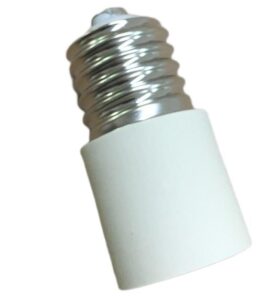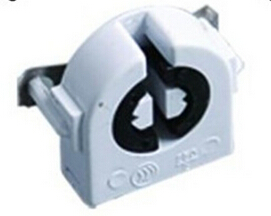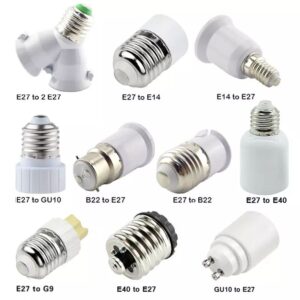Switching from halogen lamps to LED has become a topic of interest for many, especially those concerned about energy efficiency and long-term cost savings. But why the sudden surge in interest?
Well, halogen lamps, while popular and widely used in the past, are gradually becoming obsolete. In contrast, LED technology has advanced leaps and bounds, making it more accessible and affordable for homeowners and businesses alike.
LEDs offer a myriad of benefits over their halogen counterparts, including longer lifespan, reduced energy consumption, and fewer carbon emissions. With the global push towards sustainable energy sources and practices, converting from halogen to LED seems like a no-brainer.
But how does one make the switch? That’s where we, at James Lighting, come into play. As a leading manufacturer of lamp holders, we understand the intricacies of lighting fixtures. And in this article, we will guide you through the conversion process, step by step.

Why Make the Switch from Halogen to LED?
One might ask, if halogen lamps have been around for so long and have served us well, why should we change now? The answer lies in the advancements in LED technology.
LEDs are highly efficient and consume up to 85% less energy than halogens. This means significant savings on electricity bills. Moreover, with the global push towards reducing carbon footprints, LEDs are a greener choice, producing fewer carbon emissions. Their long lifespan also means fewer replacements, leading to reduced waste.
What are the Challenges in Conversion?
Switching to LED is not without its challenges. Halogen lamps and LEDs have different setups and require varying power levels. It’s essential to be aware of these challenges to ensure a smooth transition.
The primary challenge is the difference in voltage. Halogen lamps typically operate at 12 volts, while many LEDs run on mains voltage. This disparity can cause issues if not addressed correctly. Furthermore, the fitting and fixtures might differ, necessitating adjustments or replacements.

Selecting the Right LED Bulb
When transitioning from halogen to LED, choosing the right LED bulb is crucial. But how does one ensure they’re making the right choice?
Look for the lumen output when choosing an LED. Lumen refers to the brightness of the bulb. Since LEDs are more energy-efficient, they require fewer watts to produce the same amount of light as halogens. Thus, rather than focusing on wattage, focus on the lumen output to match the brightness of your previous halogen lamp. Also, consider the color temperature. If you prefer the warm glow of halogen bulbs, opt for LEDs with a color temperature of around 2700K to 3000K.
Addressing the Transformer Issue
As mentioned, the voltage difference can be a significant hurdle. So, how can we address it?
Most halogen lamps use transformers to convert mains voltage to the required 12 volts. When switching to LED, ensure your transformer is compatible. If it’s not, you may experience flickering or reduced lifespan of the LED. In cases where the transformer is incompatible, consider replacing it with an LED driver. Remember, we at James Lighting provide premium quality lamp holders suitable for both halogen and LED bulbs, ensuring smooth compatibility.

Replacing Fixtures: Is it Necessary?
In some cases, it might be. Halogen and LED bulbs often have different fittings.
While some LEDs are designed to fit into halogen fixtures, there are situations where the fixture may need replacement. It’s crucial to check the base type and size of your halogen bulb and find an LED equivalent. If you’re unsure about the fitting or compatibility, consulting with experts or manufacturers, like us at James Lighting, can provide clarity.
The Role of Dimmers
Do you use dimmers with your halogen lamps? Then this is an aspect you shouldn’t overlook.
Many halogen dimmers may not be compatible with LEDs. If you install an LED bulb and notice it’s flickering when dimmed or doesn’t dim sufficiently, the dimmer switch might be the culprit. In such cases, replacing the old halogen dimmer with an LED-compatible one becomes essential.

Cost Implications: Is It Worth the Initial Investment?
While the initial cost of LED bulbs can be higher than halogen lamps, it’s vital to view this as an investment.
In the long run, LEDs offer substantial savings. Their energy efficiency leads to reduced electricity bills, and their longer lifespan means fewer replacements. When you factor in these savings, the ROI (Return on Investment) becomes evident. Within a few months to a year, the savings on energy bills can easily offset the initial cost of the LED bulb.
Conclusion
Converting from halogen to LED is not just a trend; it’s a forward-looking decision that aligns with global sustainability goals.
With its numerous benefits, from energy savings to reduced carbon emissions, the shift to LED is a wise choice. Remember, whenever in doubt or when faced with challenges, professionals like us at James Lighting are here to help. Make the switch today, and light up your space sustainably.













